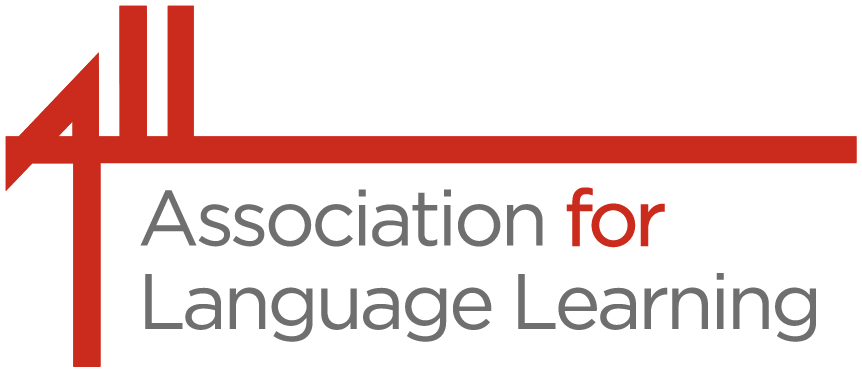Languages Today, issue 8: Summer 2011 – Anna Scrivenger
Italian culture and cuisine permeate British society, and Italian is a popular choice for adult students.
But how does it fare in other sectors?
Few places can boast such a long-exported, celebrated heritage of art, music, food, architecture and travel as Italy. Mozart used Italian for his operas and Shakespeare borrowed the folklore for his plays. Culinary favourites are served in cities all over the world, while Britons have been visiting Italy since the heyday of the Roman Empire some 2,000 years ago.
Given such close cultural links, it’s perhaps surprising that more British children aren’t offered Italian from an early age. Barbara Romito, who teaches 7 to 11 year-olds at an independent prep school, argues that its Latin base makes Italian comparatively easy to learn.
“There’s a historical link to the UK via the Romans – all western European culture is based on classical Italian culture. The words are phonetic and it’s the same alphabet, the same vowels, so it’s good for reading and writing at a young age. It’s also pleasant-sounding to us and easy to rhyme. This helps with English literacy.
“Children are exposed daily to Italian words,” she adds. “Pizza, pasta and panini are familiar. Many people know about Italian classical music and opera, including written dynamics; and of course things such as motor racing, football and fashion help to popularise it.”
Yet, according to CILT (the National Centre for Languages), just 4% of primary schools offer any Italian.
Cultural connection
The Language Trends Survey 2010, compiled by CILT with support from ALL and ISMLA, found that 17% of state secondary schools offer Italian, some of it outside curriculum time. Two out of five (40%) independent secondary schools offer Italian. There is still disparity between state and independent schools at post-16 level, with the language offered to 6% and 27% respectively. 38 UK universities offer Italian, but the number of students overall is in decline (3,930 in 2005-6 to 2,405 in 2008-9).
Sonia Cunico teaches Italian tostudents at Exeter University. Italian is popular in the higher education sector, Sonia tells us. Students of Italian origin are keen to master their mother tongue, but most students study it out of interest, or because they find it accessible due to its familiar Latin roots, she says. Secondary school teacher Peter Langdale confirms this: “For many older pupils, the attraction of Italian lies in the art, history and culture side – many of my pupils are musicians.”
“It is a musical language,” agrees secondary level teacher Sharon Mangion. “People interested in classical music will find a strong connection with musical terms. It is attractive for British people, particularly adults, as they want to visit the country and enjoy what it has to offer… knowing the language will allow them to appreciate the authenticity of the place.”
Adult education
Unsurprisingly, then, Italian finds its strongest student base in the adult education sector. It’s the third most popular language, and accounts for 10% of adult language learners.
Adult educator Carmela Amodio-Johnson cites four main groups of adults eager to learn Italian: UK-based Italophiles, second home owners, third-generation Anglo-Italians, and those needing the language for business. Language skills are essential “for anyone who wishes to live, work, visit or travel in Italy, either to get by or to be fluent enough to share ideas and opinions,” she says. “Even students with some learning difficulties, such as dyslexia, can master and enjoy Italian more easily than other European languages.”
But if Italian is such a popular choice, and easy to learn, shouldn’t more schools be giving learners a headstart and putting it on the curriculum?
Primary teacher Barbara Romito highlights the issue of finding qualified teachers. Apart from the Government’s initiative to install native speakers in selected state primary schools and to offer it to children of Italian parentage at afterschool clubs, there has been limited opportunity to study Italian as the main language at PGCE. “Native speakers do not always have knowledge of the UK educational system. At primary level, there are insufficient language specialist teachers.”
Offering Italian
But there are a few bodies who may be able to help schools interested in introducing Italian. The Ministry of Foreign Affairs sends ‘lectors’ into schools and universities to teach Italian; contact the Italian Consulate in London for information (see overleaf). The Consulate runs 238 after-school classes (189 of which are in primary schools) for children of Italian descent, and curriculum courses within 102 UK schools, involving 12,500 primary and 2,400 secondary pupils. There’s a similar scheme in Northern England and Wales, with a lower uptake.
“We help the Italian government to promote courses for Italian emigrants and their families, with the aim of diffusing a culture of cooperation and exchange throughout the EU,” says Paola Dri who works in the Consulate’s Education Department. “Qualified native-speaking teachers are designated and paid by the Italian government to deliver the courses.”
The Consulate also has a forum ([email protected]), and distributes a newsletter and teaching resources to Italian language teachers at all levels, free of charge. Barbara Romito uses the Consulate’s KS2 scheme of work, and recommends the Italian Bookshop in London for a selection of resources.
Il cinema
One of the best ways to teach Italian is through film. “Cinema is a good way into a culture,” says Sonia Cunico.
It’s a point echoed by Sharon Mangion. “I have used film for three years in teaching the Literature and the Arts topic,” she says. “Students find it easier to empathise with the characters and in the allocated time frame, it’s much easier to get through than a novel. We analyse La Vita è Bella.”
Peter Langdale shows La Notte di San Lorenzo to his post-AS level students, and selects individual scenes as starting points for listening and speaking exercises. The school library stocks films like Il Postino and Cinema Paradiso for students to watch in their own time. “There’s also a great deal of good video material provided online by RAI,” he continues. “Anything from the latest news bulletins to episodes of Commissario Montalbano, to cartoons and soap operas.” The excellent La Storia Siamo Noi site provides fantastic material for historical and social study at A-level.”
For adults, the learning opportunities are greater still. Carmela Amodio-Johnson uses Italian films with adult learners to discuss the history, geography, art, cultural mores and everyday life; to break down stereotypes; and to expose learners to different regional dialects. “Short extracts can be used to set listening tasks, practise role-plays, practise grammar or stimulate students’ aural and written productions.”
Future generations
At primary level, of course, the typically adult themes of Italian cinema are not suitable, though Barbara Romito does use documentaries about Italy’s culture and geography.
Film is an excellent way to encourage an understanding of Italy and its cultural riches in language students. Backing this up with the support of the Consulate and other relevant bodies, good resources and well-run links or exchange programmes with schools in Italy, our age-old love affair with Italy is sure to continue through future generations.
Italian cinema for lovers of language
Italy has produced some world-class cinematic masterpieces, which will improve comprehension and listening skills as well as develop cultural understanding and inspire an appreciation of Italian cinema. Here’s our pick of the best.
La Vita è Bella (1997, aka Life is Beautiful) won the 1999 Oscar for Best Foreign Language Film. Roberto Benigni wrote, directed and starred in this labour of love about a Jewish-Italian father’s Herculean effort to protect his young son from the horrors of a Nazi concentration camp, using nothing but his wit and imagination. This beautiful, heartbreaking tale can leave nobody unmoved.
Cinema Paradiso (1988) is another Oscar-winner, scooping Best Foreign Language Film in 1990. Salvatore, now a famous film director, recounts his youth in postwar Sicily, where at the village cinema he discovered a passion for film, romantic love, and a deep friendship with ageing projectionist Alfredo. These three loves intertwine along a course of triumph and tragedy, leading Salvatore to his destiny.
Il Postino (1994) is set on an Italian island in the 1950s, where exiled Chilean poet Pablo Neruda befriends the local postman, Mario, and inspires in him an affinity with poetry. Thus equipped with the power of language, the postman is able to woo a local girl. This moving tale documents some of the most beautiful aspects of life, as well as the ugly side of humanity.
La Dolce Vita (1960), hailed as a neorealist masterpiece, is set in contemporary Rome amid the empty glamour of a hedonistic café society in pursuit of more meaningful lives. The film was widely censored at the time because of its blasphemous, sexual and profane imagery. One for adult learners.
Online resources: support for teachers of Italian
Resources, posters and brochures
• ENIT – Agenzia Nazionale del Turismo
www.enit.it / [email protected]
• The Italian Consulate
www.conslondra.esteri.it
• La Storia Siamo noi
www.lastoriasiamonoi.rai.it
Activity packs
• Carluccio’s children’s activity packs include information on the history of pasta, seasonal vegetables and ice-cream. For more information, visit www.carluccios.com.
• La Vita è Bella. For useful resources and activities, visit www.lavitaebella.co.uk.
Educational support for Italian
• The Italian Consulate
www.conslondra.esteri.it/[email protected]
• The Italian Cultural Institute
http://www.icilondon.esteri.it/IIC_Londra
And there’s more…
Find out what the Association for Language Learning is already doing for teachers of Italian across the UK
• Visit our Italian Committee page (http://tiny.cc/ALLforItalian) for details about events, activities and competitions for Italian students and teachers.
• Our Tuttitalia page (http://tiny.cc/Tuttitalia) gives details about our Italian journal for teachers.

